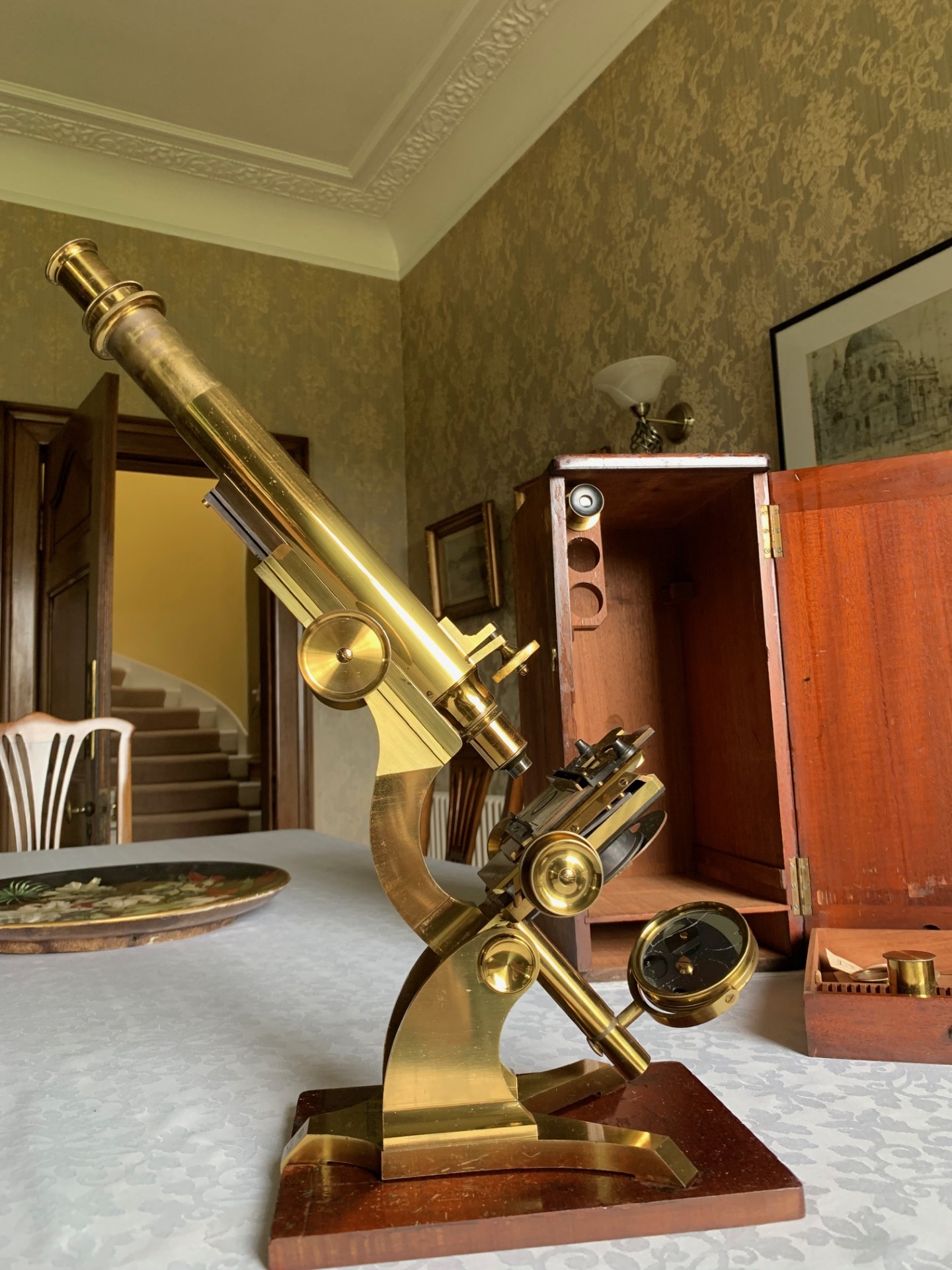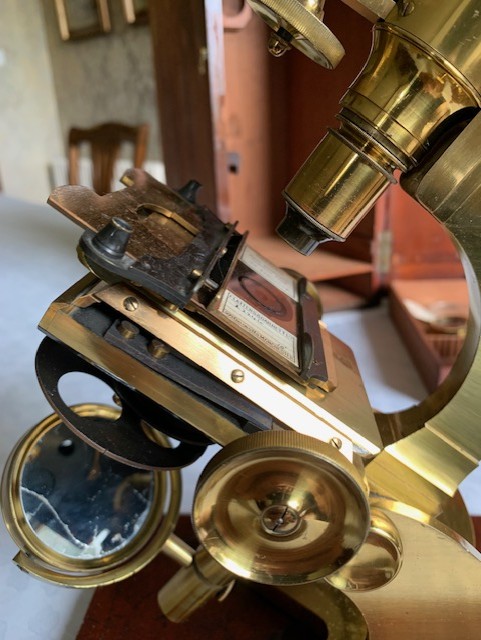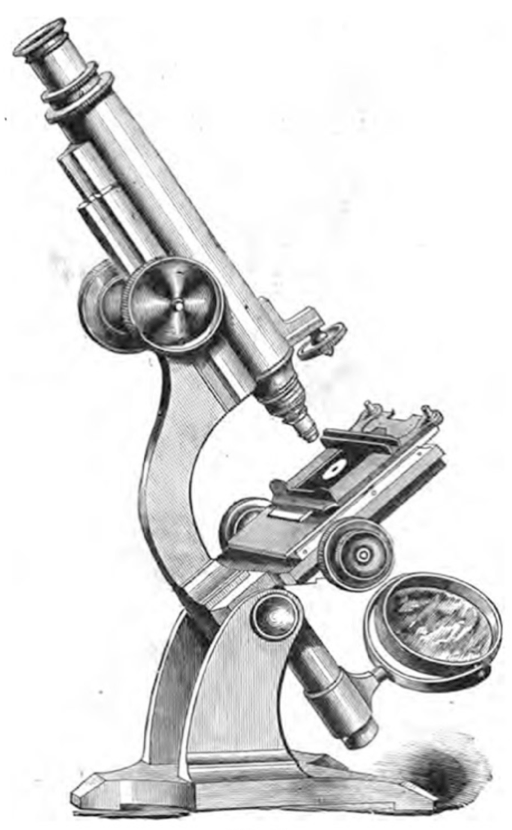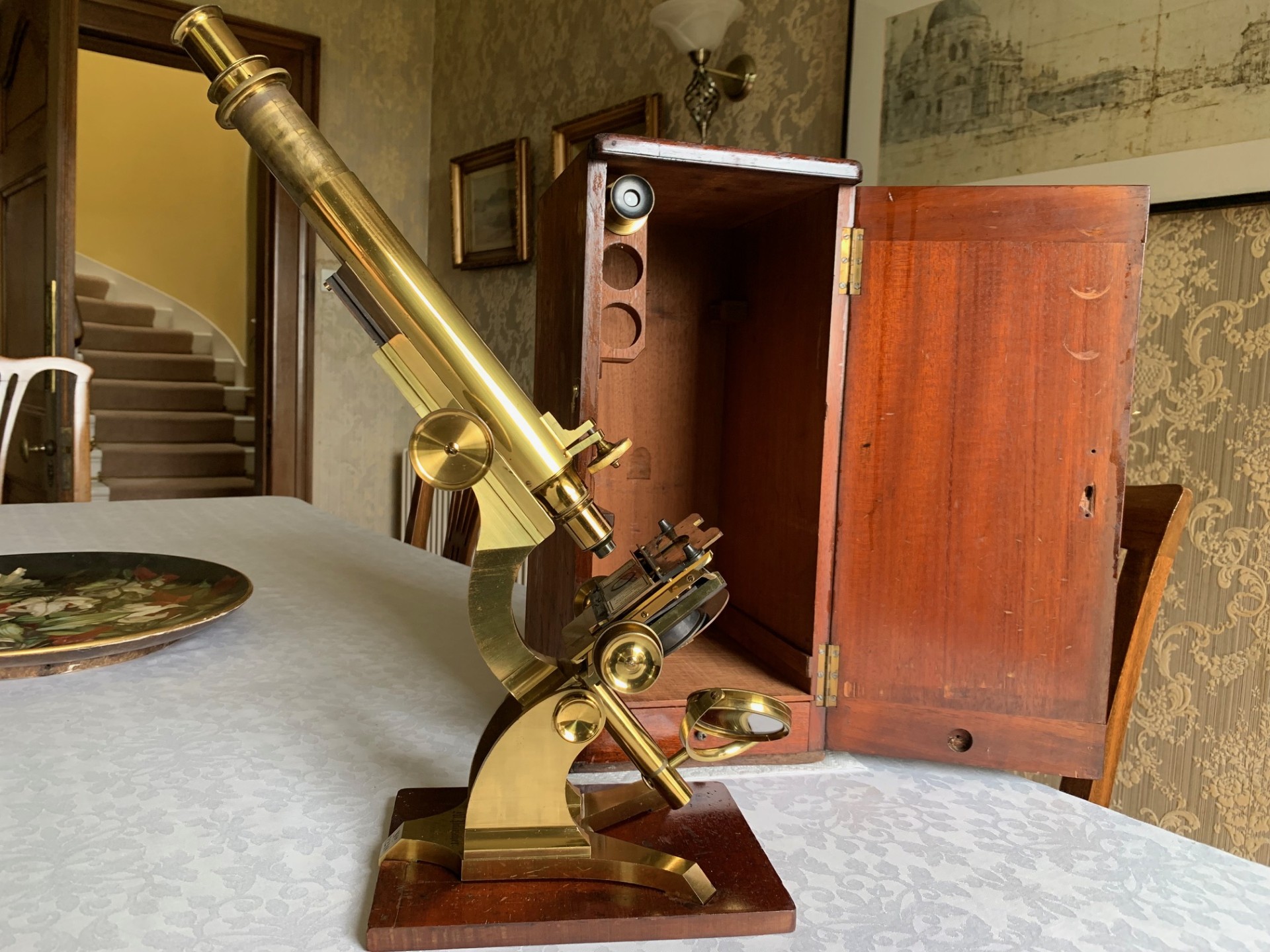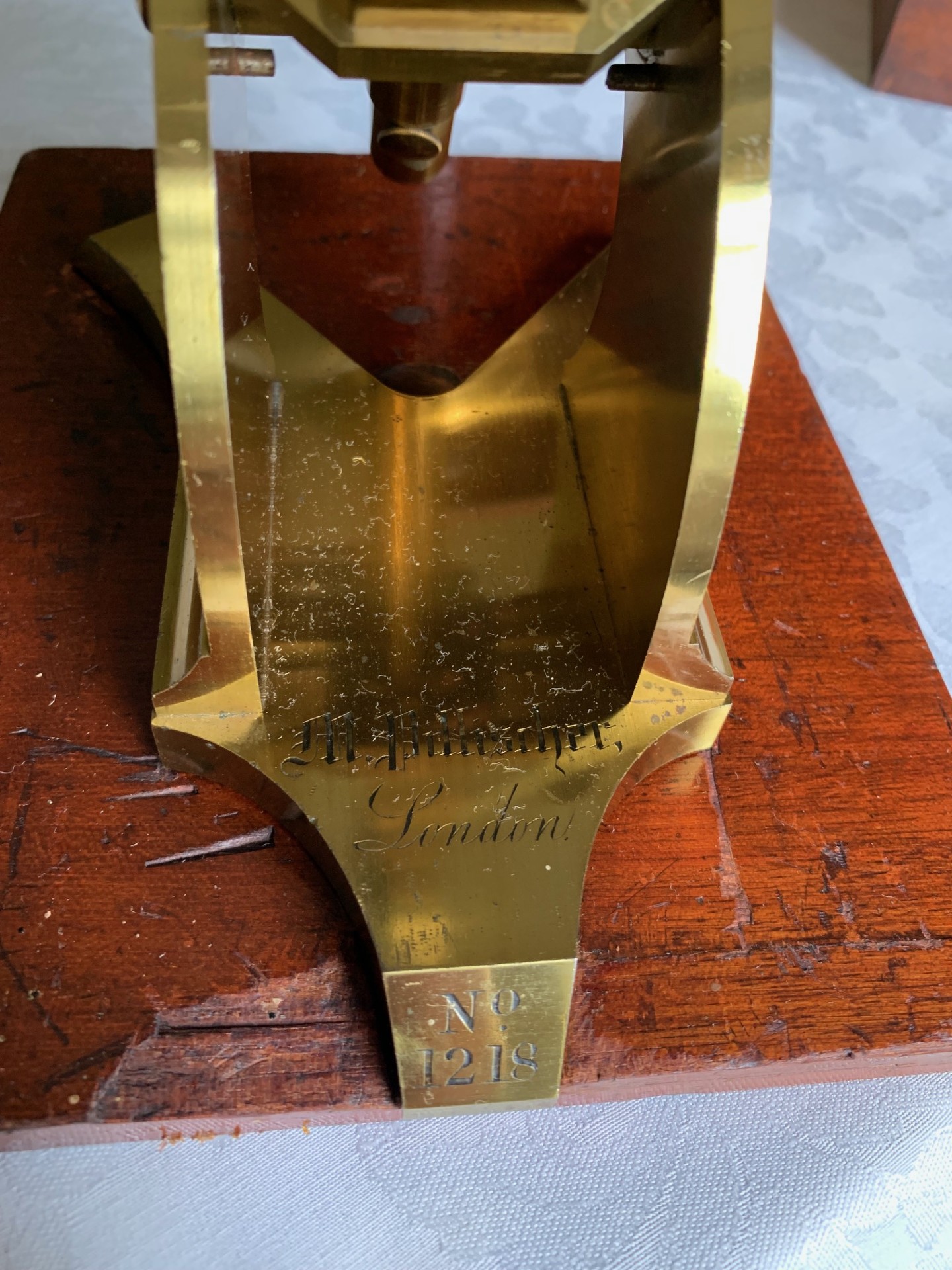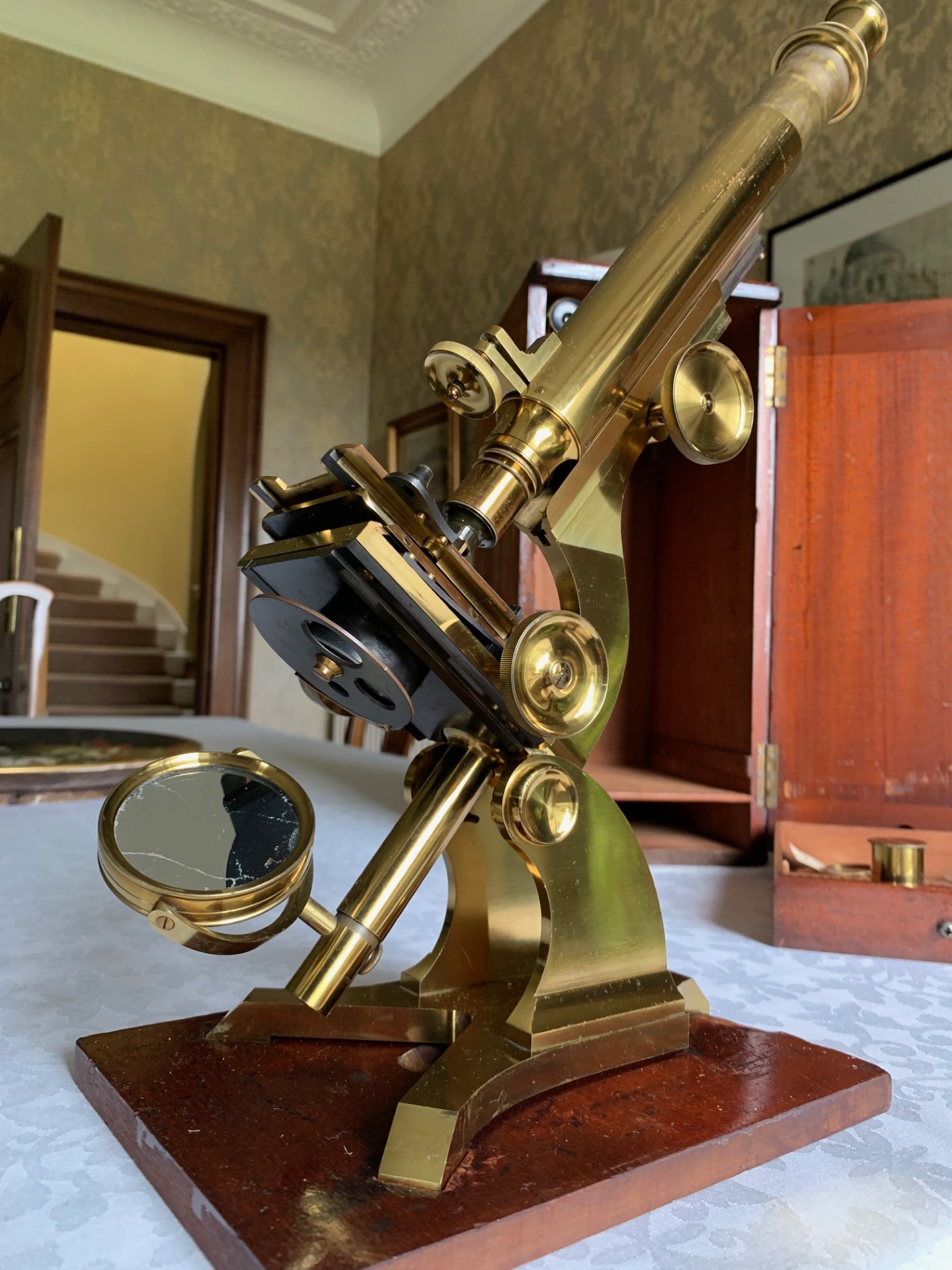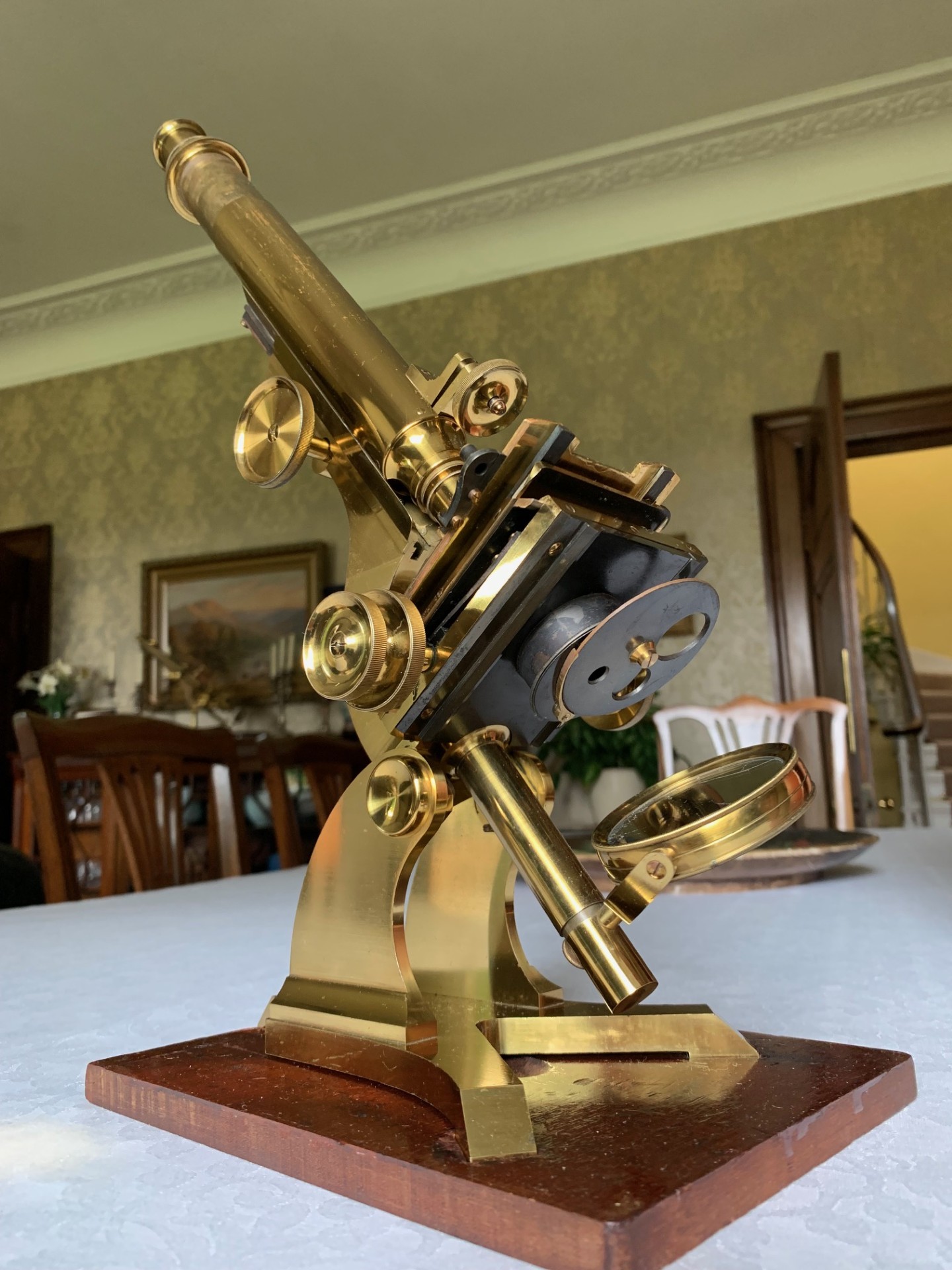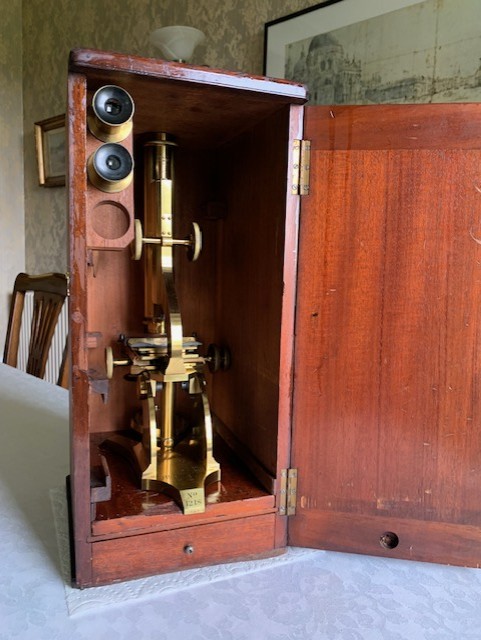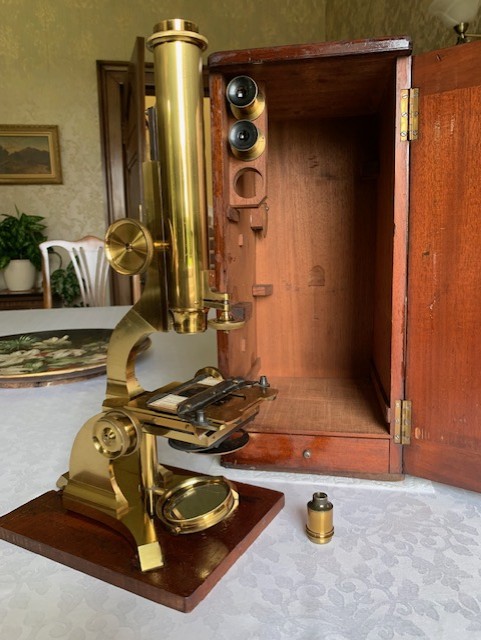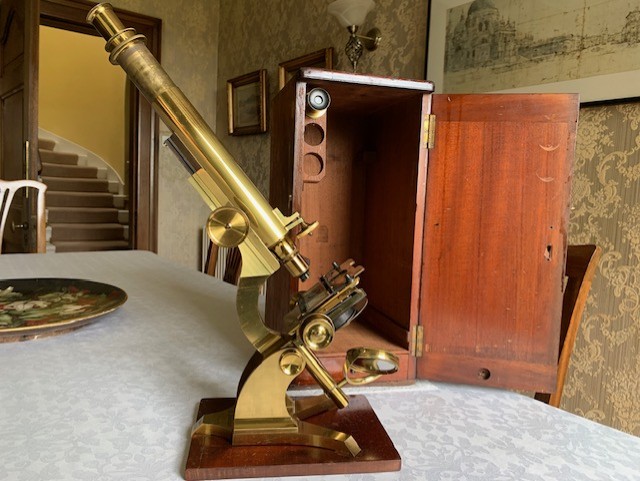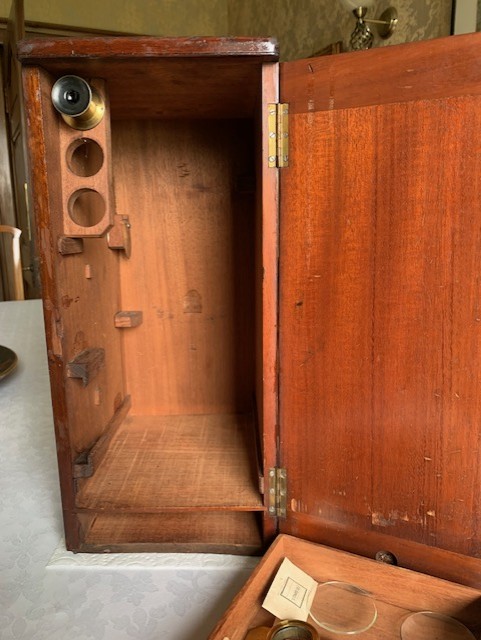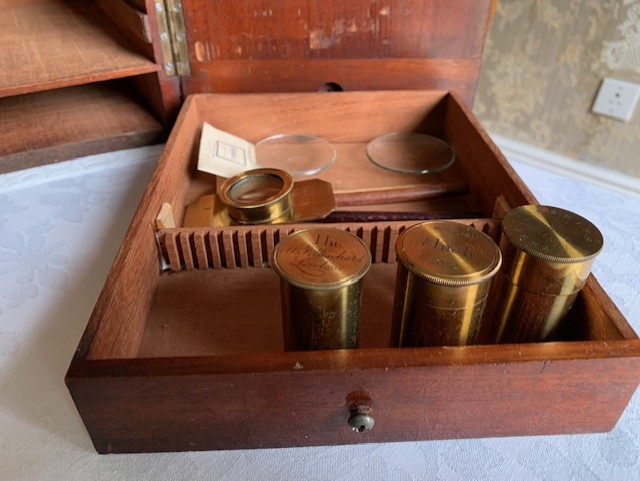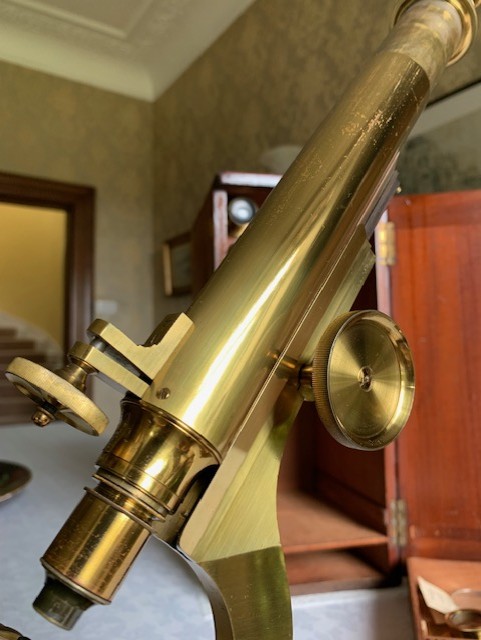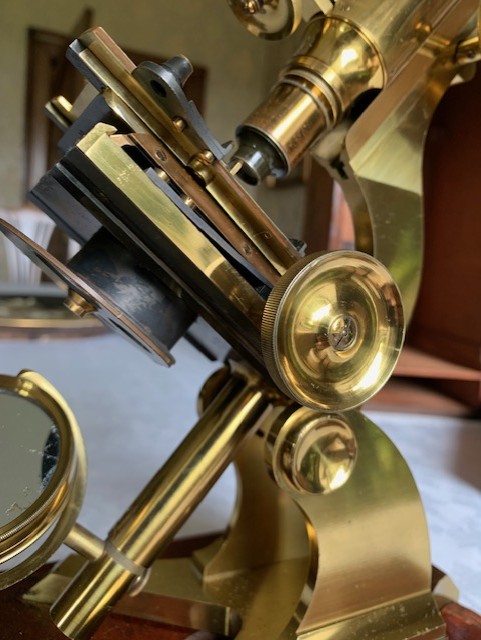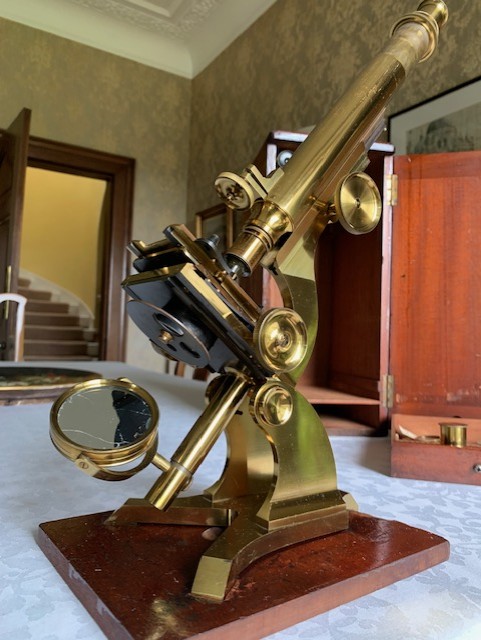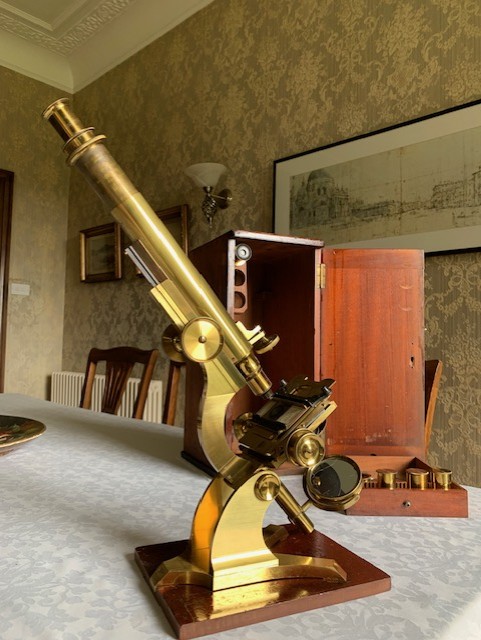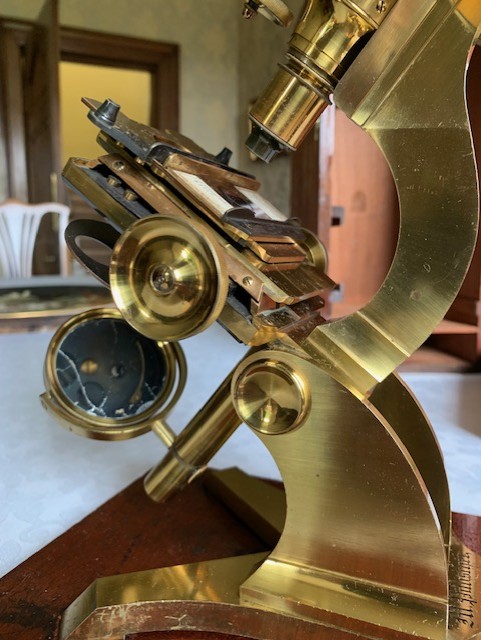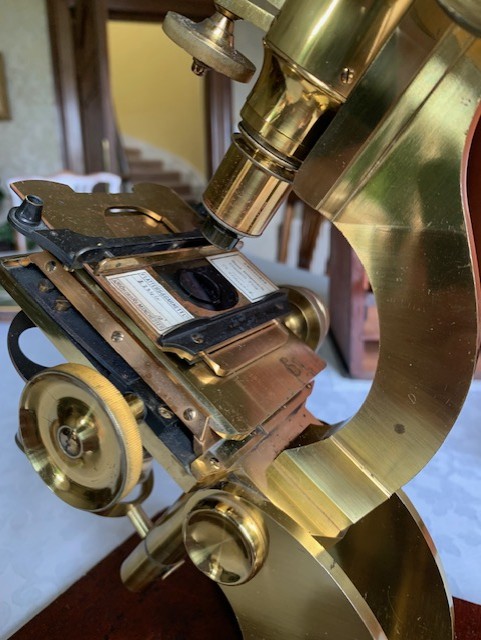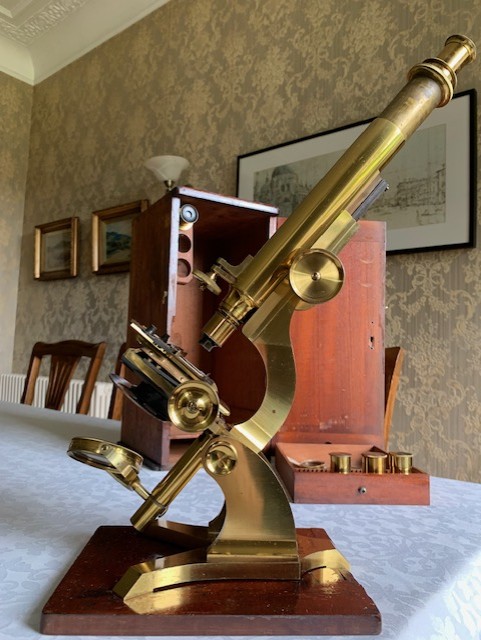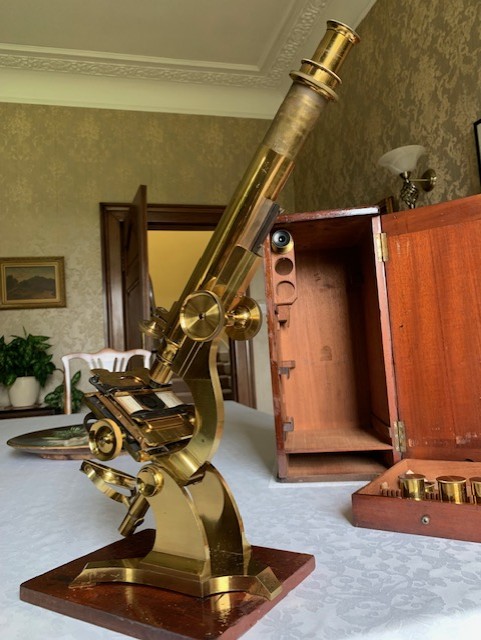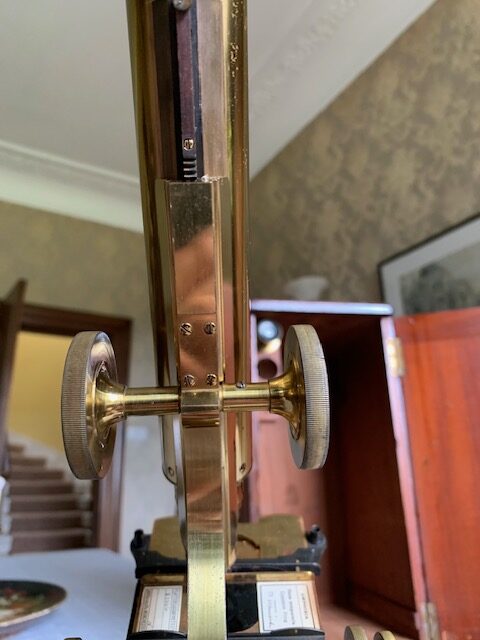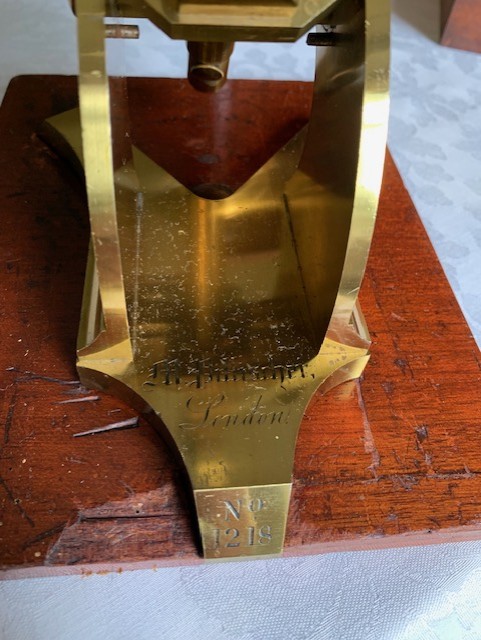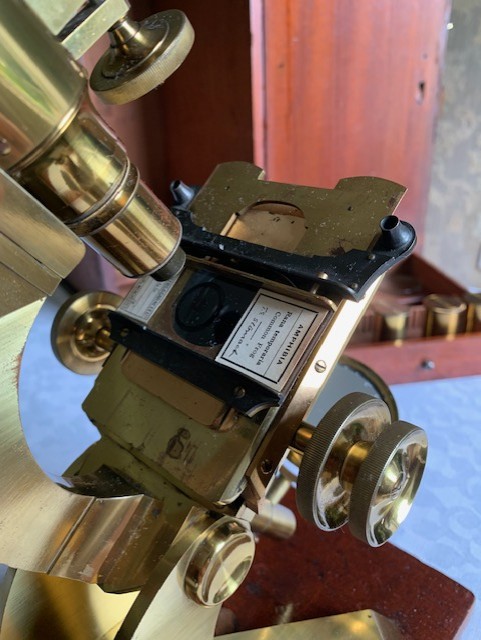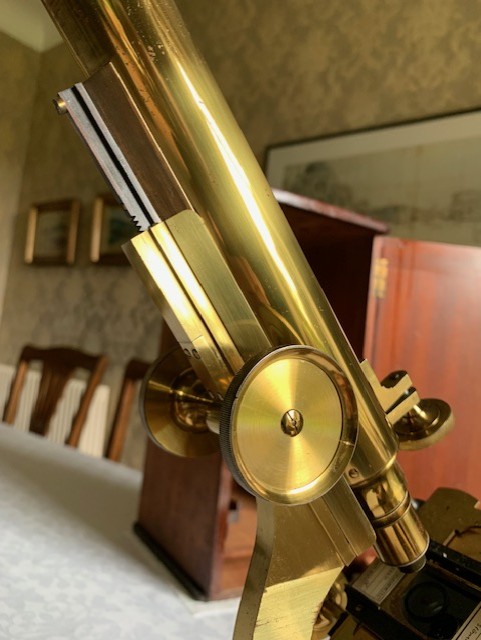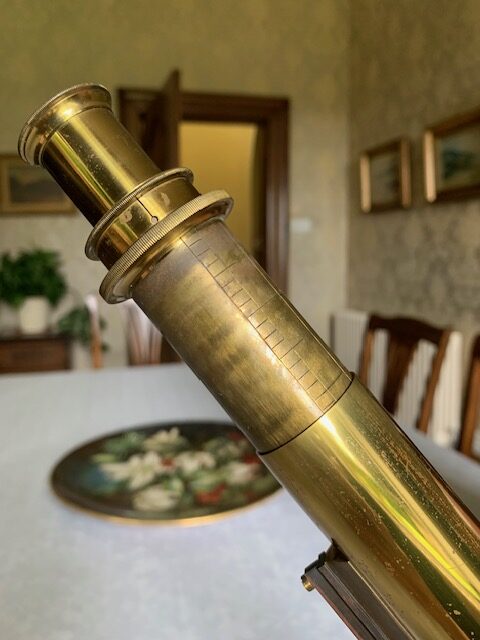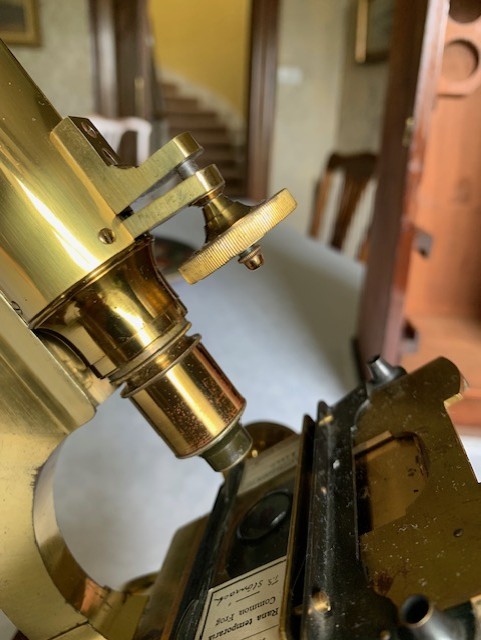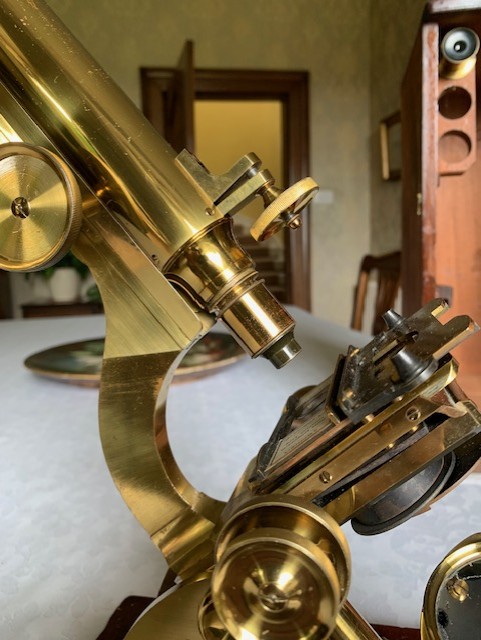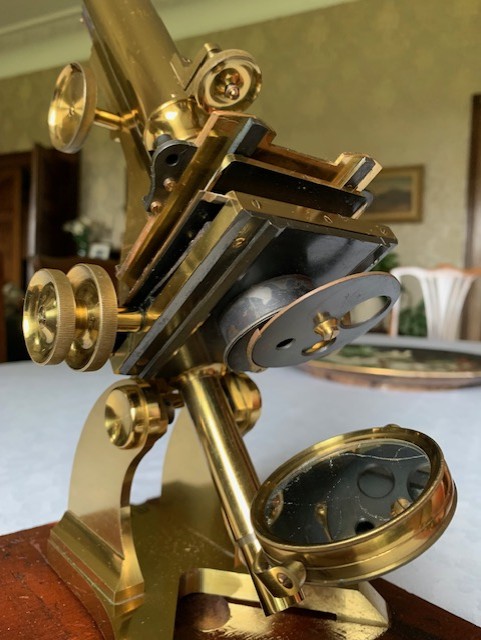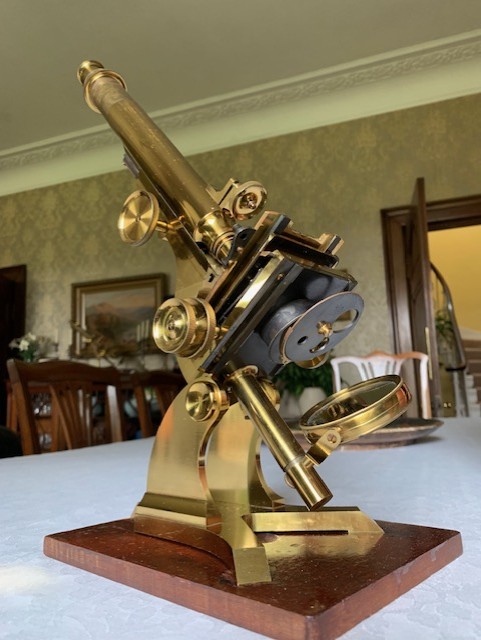SOLD – Fine Antique Moritz Pillischer – Improved Medical Microscope in Brass – c1870, Cased
Sold
Fine Antique condition collectable and quite rare monocular instrument by scientific instrument maker Moritz Pillischer of London, known as the Improved Medical Microscope. Please read the listing in full if you're interested in this antique instrument.
Circa
1870
Maker
Mortitz Pillischer Opticians, London
Country of manufacture
UK and Ireland
Description
Offered for sale is a fine collectable example of an antique monocular brass microscope by quality makers Moritz Pillischer Opticians of London. The instrument is numbered 1218 and will date to around sometime in the 1870s or possibly into the 1880s. It’s a generally very good condition, usable instrument with a couple of minor condition issues noted in the body of the listing text, that also makes a stunning and imposing display piece.
Background to M Pillischer Opticians
Moritz Pillischer emigrated from Hungary to London in 1845, where he began producing microscopes and other scientific and mathematical instruments from about 1849 onwards. Moritz’s nephew James moved to London around 1860 to work for his uncle and later became Moritz’s son-in-law, after marrying one of his daughters. Pillischer did not make his own lenses until 1854, initially providing French-made objectives with his instruments. There were a number of different models produced by Pillisher over the active period, including the following:
– The Lenticular microscope – an early c1850s portable instrument
– The Kosmos microscope – a well-specified Lister-limb model normally in monocular configuration
– The International microscope – a bar-limb design often supplied with attached bulls-eye condenser
– The Improved Medical microscope – this model
– The Student model – forerunner of the Improved Medical model
Moritz Pillischer was elected as a Fellow of the Royal Microscopical Society in 1855 and joined the Quekett Microscopical Club in 1869. By 1881, Moritz had moved to Hove, Sussex, although he retained ownership of the Pillischer optical business. He handed over ownership of the business to his son-in-law in 1887 and passed away at his Sussex home in 1893. James joined the Quekett Microscopical in 1895, and the Royal Microscopical Society in 1898. After James’ death in 1930, the company was inherited by his three children, Edward, Leopold, and Bertha and the business was eventually liquidated in 1947.
This example of a Pillischer monocular instrument is known as the Improved Medical Microscope and will probably date to the late 1870s in view of the serial number – there’s an extract from Antique Microscopes showing this model’s 1873 catalogue entry in the listing photos. In view of its original design for the medical profession it may appeal to collectors of medical instruments or indeed those currently in or retired from medical and allied professions. It’s in fantastic cosmetic condition for its age and presents really well with lovely gleaming brass-work details, bright lacquer finishes and just a little age-appropriate patination here and there. It’s survived amazingly well over the last 150 years or so and the lacquered brass-work catches the light superbly as I hope the listing photos demonstrate.
The instrument’s look and feel is of a quality not found in modern microscopes in that’s it’s fashioned from solid brass, giving it a weighty feel and quite an imposing presence when extended for use with draw-tube and coarse focus racked out.
Technical details – the construction is a Y-shaped foot with twin uprights supporting a pivot and an elegant elongated Lister-type upper limb, the design of which is reminiscent of Watson’s Jackson model microscope from the late Victorian era. The foot also sits on a mahogany base plate giving extra stability. Coarse focus is by rack and pinion with the older-style horizontal cut, which has quite a smooth action and holds in position as it should through its working range, with just a little lateral play in the dovetails that not that noticeable. Fine focus is via a small brass thumb-wheel located on the front of the main tube, being a vernier screw acting against sprung resistance on the nose-piece only which also works well.
In terms of its optics, this microscope has a graduated eyepiece draw-tube with smooth action that holds in position on adjustment and it’s supplied with three top-hat brass eyepieces which work well giving nice bright images, as follows:
– 5x magnification
– 8x magnification
– 10x magnification
It’s also got three objective lenses which screw directly into the optical tube, as under:
– 1 inch – 6x magnification – Pillischer
– 1/6th inch – 40x magnification – Watson
– 1/6th inch – 40x magnification – unbranded brass objective
The magnification range currently available with its current optics is therefore is around 30x to 400x with the draw-tube set at standard length, plus this will increase as you extend the draw-tube – you also have to re-focus on your specimen. I’ve tested the optics with various antique slides of insect and animal specimens and the images are perfectly acceptable when using good illumination.
The instrument tilts for inclined viewing and holds in position through its working range as it should and it can be tightened as required. The all-brass specimen stage is fully mechanical with concentric x/y axis controls on opposite sides of the stage, along with full 360 degree rotational adjustment to the top-plate. Note: there is some occasional crabbing especially when using the right-hand concentric controls, giving diagonal movement. There’s a sliding top-plate with rest for holding slides steady along with a further slider mechanism with sprung retainer for holding slides in place, which works quite well.
Turning to the sub-stage, we currently have a brass friction-fit mount that’s fitted with a wheel-of-stops with three aperture sizes available. Lighting is via a plano-concave mirror in a brass gimbal mount with height and rotation adjustment, with period silvering showing some slight spidering to the plano side with reflectivity that’s perfectly adequate.
Accessories:
– live box
– some slide prep tools
– two watch glasses
– blank slides & coverslips
The instrument has been lightly lubricated with non-hardening grease, so that the controls operate smoothly. This example displays exceptionally well having quite a presence, with its bright lacquer highlighting the lovely brass-work details. Overall, this example of a Pillischer Improved Medical Microscope while being quite usable should also make a fantastic display piece, perhaps in a library or home office type of setting, especially when set up with an appropriate antique slide. Also, with the instrument being fitted with a mahogany base-plate that lends itself to use or display on a polished surface.
There’s also the original storage case with this instrument which is in reasonable age-appropriate condition with some loss of finish to the exterior and shrinkage cracking to a couple of panels. It’s fitted with internal racking, recessed brass carry-handle, storage drawer and a latch to keep the door closed.
Owing to the weight and delicacy of this antique microscope, it will be partially dismantled, carefully wrapped for shipping and dispatched by insured courier upon receipt of cleared funds.
Ask the Dealer
Dealer information
 Arcboutant Scientific
Arcboutant Scientific
Howard Nutton based in Glasgow Scotland with a background in Natural Science along with previous career in risk management. I obtained my first antique microscope in 1988 - it was a Watson Edinburgh model H serial number 23604 - dating it to 1918. Since that time I've owned and restored hundreds of similar instruments. As Arcboutant Scientific now also making available personally curated fine examples, principally of antique microscopes and associated scientific equipment by quality English and Continental makers, to collectors world-wide.




